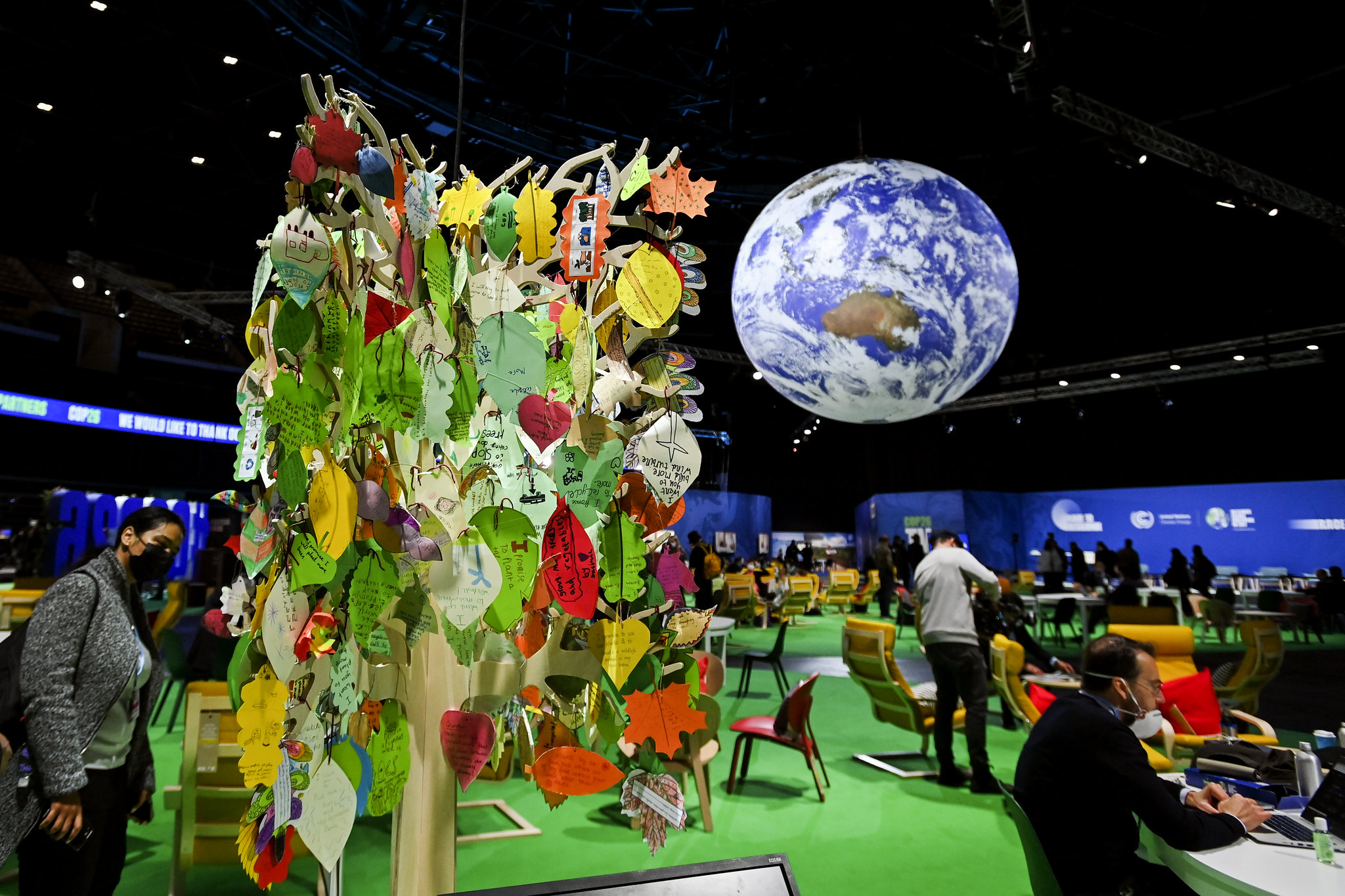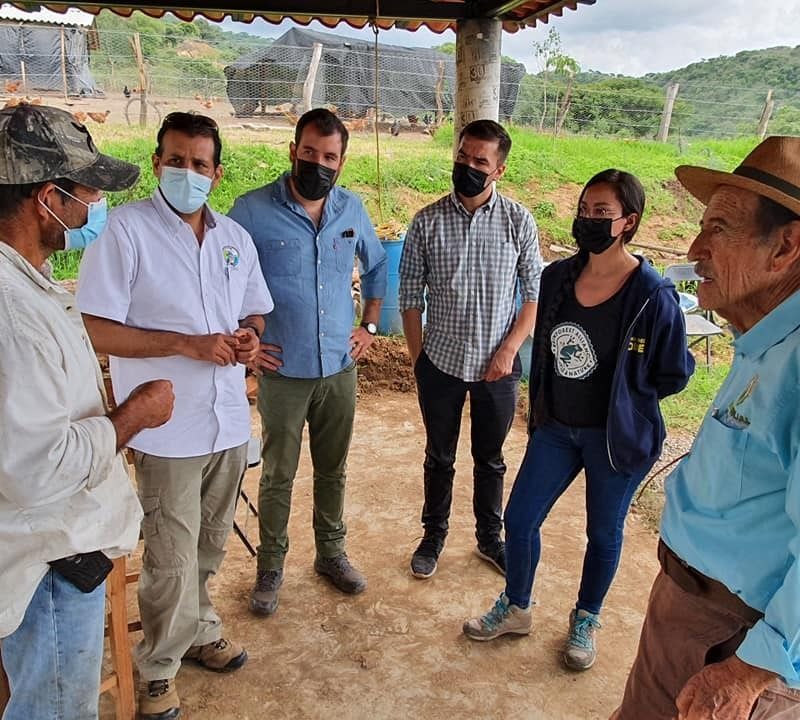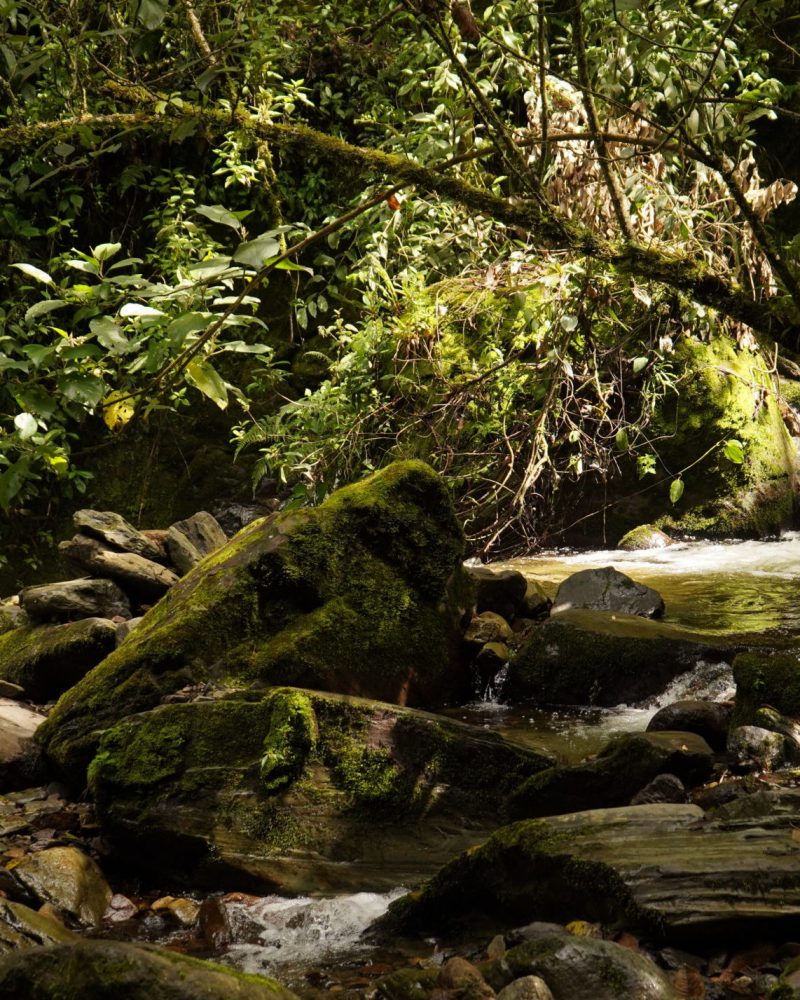The View from Inside
Four members of EI’s team, Shelly Hicks, Liz Lauck, Caroline Ouko, and Paola Zavala attended COP26 in Glasgow in early November. Here each team member shares what it was like to participate and their key takeaways.
The Negotiations
Dr. Caroline Ouko consults for EI’s Economics of Natural Capital in East Africa Project and attended COP26 as the Item Lead for Action for Climate Empowerment for the Kenya Party Delegation.
As a party representative for Kenya, I had the honor to participate in the official negotiations for Action for Climate Empowerment. The experience was one of intense work paired with thoughtful deliberation. Due to Covid-19 restrictions, there was often only one country representative in the negotiations, meaning you had to be well versed in your country’s position and not afraid to speak up. Negotiating is a delicate process, we had to reach consensus before we could put pen to paper, so we often worked late in the night and returned early the next morning. Still, everyone was all in, you could sense the urgency of the moment. When the negotiations stalled, the organizers called in high-level actors, like the Ministers from the UK and even the UNFCCC Subsidiary Body Chair Marianne Karlsen, to remind us of the call to action and to move beyond individual differences.
We ultimately came away with the Glasgow Work Programme on Action for Climate Empowerment for the next ten years. It isn’t perfect, but it is a significant achievement as we reached consensus on aspects that have been negotiated over for many years. Going forward all countries are expected to have at minimum some action across six elements: education, training, public participation, public awareness, access to information, and international cooperation. There is no one-size-fits-all approach to climate empowerment, so each country has the flexibility to decide how they will enact programs to address these elements. Importantly, youth are at the center of this programme – I’m convinced that if we let young people lead, their drive will help us create the momentum needed to reach net zero. We all face a long road ahead to address the climate crisis, but these negotiations and the programme we were able to adopt leaves me optimistic.
A Focus on Learning
Nature-based Solutions
Shelly Hicks is the Chief of Party for USAID’s Measuring Impact II project.
For me, the takeaway from COP26 was clear – in order to keep the goal of 1.5 alive we must decarbonize the global economy and leverage natural assets for mitigation and adaptation. As an observer, I witnessed more than twenty panel conversations spanning technology, governance, finance, women, youth and indigenous peoples, climate justice, adaptation, resilience, and locally led development – every panel directly or indirectly referenced nature-based solutions (NbS) as an essential component to our success. There is a collective reckoning that the natural environment is our greatest resource for cost-effective climate mitigation and that action to restore, replenish, and protect natural resources must be prioritized.
Nature-based solutions as a practice are not new, but the fact that national governments are more frequently including NbS in National Adaptation Plans and Nationally Determined Contributions presents a critical opportunity to integrate conservation and development more holistically. For a long time biodiversity conservation has been isolated from major development priorities, but NbS provides a vision where our natural resources are appropriately valued for their contributions to human wellbeing. This means development planning must take more of a systems approach and embrace the inherent complexities and tradeoffs that come with that. In order to live up to the promise of “the decade of action,” we need to start by integrating NbS across development planning.
Locally Led Adaptation
Paola Zavala is a Senior Program Cycle Specialist at Environmental Incentives and the Natural Resources Management and Climate Change Program Coordinator for Fundación Futuro Latinoamericano (FFLA).
I had the unique opportunity to attend COP26 as both a representative of EI and of the Fundación Futuro Latinoamericano (FFLA), a private nonprofit dedicated to facilitating locally led sustainable development across Latin America. Being there with both hats meant that I was especially excited to see locally led adaptation take center stage at COP26. I’m a strong believer in locally led adaptation as my work with FFLA focuses on local watershed management through Water Funds in the Andean region. We know these mechanisms work to incentivize conservation practices and deliver benefits locally; now we are trying to highlight how the local-level work of the Funds can roll up to achieve greater systemic impact. This is part of the power of locally led adaptation: small activities led by affected communities can add up to make global impact.
Many news outlets covered the historic increase in contributions of over $300 Million to the Adaptation Fund (FFLA is co-secretariat of the Adaptation Fund’s Civil Society Network), which will enable many more communities to initiate local adaptation projects. Still, the challenges we face now are to make sure local organizations have access to that funding, and to make the link from locally led actions to regional and global networks. You could see this starting to take place at COP: many of the countries were showcasing locally led adaptation activities, but this network needs to continue beyond the conference. Climate change impacts are interconnected and so our solutions have to be as well. It’s critical that local communities lead adaptation activities and then civil society can step in as the facilitator to make the link to the regional and global level.
Beyond Glasgow
Liz Lauck, Partner and International Practice Lead
Participating in COP26 as a civil society observer was an all-in experience – there were hundreds of events happening at the same time, and we were constantly surrounded by amazing people committing their creativity and energy to find solutions to the climate crisis. Most of the post-COP analysis has focused on the high-level negotiations that are the primary purpose of the conference. However, I think the coverage has missed the vibrancy and power of the side events. The Blue Zone, the designated space for non-government activities, was full of real and evolving conversations with representatives across sectors, geographies, and lived experiences.
There was a sense of shared urgency and commitment that was both sobering and inspiring. Even with immediate action, we may not be acting fast enough. Still, this urgency was animating rather than paralyzing. Representatives from the private sector, civil society, advocacy groups, were all coming to the table saying we want to learn, and we’re committed to developing solutions. Ultimately, I saw a lot of the ingredients, including locally led adaptation and nature-based solutions, for making systems changes and moving towards our global goals.
For all four of us, the call to action coming out of COP26 is clear – transformative change must happen this decade and we look forward to working with our partners to be a part of that change.



